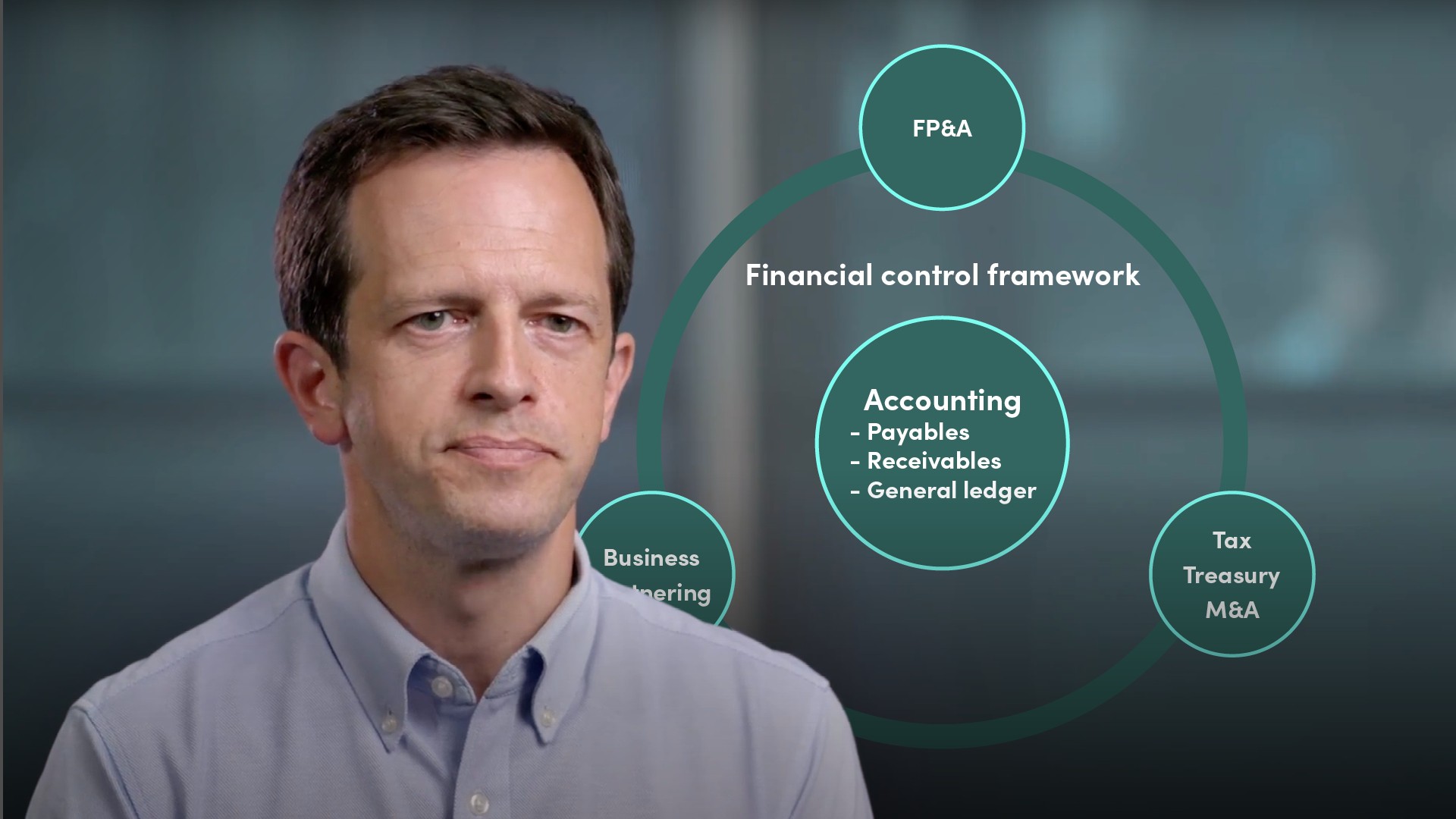
The Function of a Finance and Accounting Department

Paul Nichols
CFO: 20 years as a chartered accountant & CFO
In the second video to this CFO series, Paul outlines the importance of the finance team surrounding the CFO, and their key areas of responsibility in ensuring that there are key systems and processes in place to maximise efficiency.
In the second video to this CFO series, Paul outlines the importance of the finance team surrounding the CFO, and their key areas of responsibility in ensuring that there are key systems and processes in place to maximise efficiency.

The Function of a Finance and Accounting Department
16 mins 28 secs
Key learning objectives:
Understand how the typical finance department is structured
Learn why the core accounting section is so fundamental to the whole
Outline the roles of the non-accounting functions of Finance
Identify the key stakeholders of Finance
Overview:
Given the breadth of the modern CFO’s role, it’s important that there is a sound Finance team, system and processes to support them. It’s bound together by a robust set of Financial Controls that ensure that financial risk is minimised and that the financial data are in accordance with accounting standards and can be relied upon to support the CFO’s interactions with a broad group of important stakeholders.
How is the typical Finance department structured and why is the core Accounting section so fundamental to the whole?
The Finance department has the Accounting section at its core. This is the engine room of Finance, where all the transactions are processed and therefore provides the data from which all other financial services are leveraged for the organisation. In addition to accounting, Finance organises itself into Business Partnering, Financial Planning and Analysis, and Tax/Treasury/M&A. Binding all these activities and linking them together with the business as a whole is a set of Financial Controls.
All companies use some form of accounting system. The accounting system is organised via a Chart of Accounts that determines where each type of transaction is posted in the accounting system consistently over time. This is split into income and expense categories for the Profit and Loss account, and asset and liability categories for the Balance Sheet. The design of the Chart of Accounts and how they are used are determined by globally accepted Accounting Standards that ensure companies’ accounts are comparable and transparent.
The Accounting function is organised into Accounts Receivable (debtors ledger), Accounts Payable (supplier ledger), and General Ledger. Binding all these activities and linking them together with the business as a whole is a set of Financial Controls. These are a set of policies and procedures that minimise financial risk. Taken a level down, they are the means by which a company’s assets are safeguarded, fraud is avoided, and the company’s financial reporting can be relied upon.
What are the roles of the non-Accounting functions of Finance?
FP&A’s role is to evaluate the entirety of the company’s financial situation and to turn this into insights and recommendations that help the management team to meet its financial goals. It will produce the monthly financial statements with commentary of performance against budget and forecast. It will work with the business to produce the long term plans and the budgets and forecasts for the upcoming period. It will consider macroeconomic factors and trends that are impacting the business. It will also analyse trends within the company’s own operations compared with what was planned for the period, in order to shine a light on what current performance means and where risks and opportunities might lie.
Business Partnering - This involves partnership with non-financial departments, performance of ad hoc analysis, and recurring tasks such as maintenance of monthly financial reporting, budgeting and forecasting, and detailed analysis of department spend. The maintenance of systems and related financial processes, for example in the Sales or Customer Services teams might be carried out by Business Partners.
Tax function - Its overarching objective is to ensure the company pays the right amount of tax on company profits, and the right amount of sales or value added tax, further that tax rules are clearly understood and applied to ensure that a company or group of companies is not paying tax unnecessarily. Where an international group of companies is involved, there will be international tax planning to manage, and the concept of Transfer Pricing which determines how much profit is made in each country and therefore how much tax is paid.
Treasury - Cash management and funding ensure there is liquid cash available at all times to meet liabilities as they fall due, and to ensure that cash and foreign exchange is banked and managed optimally.
Mergers and Acquisitions (M&A) - Required where a company is developing through buying and selling, or merging with other companies, rather than organically. This brings its own set of challenges for the CFO, firstly with the selection of the target company and the management of the deal itself, and then in the integration process as the 2 companies are combined.
Who are the key stakeholders of Finance?
- Customers: accurate, timely billing and link to customer services (sales)
- Suppliers: timely and correct payments, negotiations, problem resolution
- Employees: timely and correct salary payments, data, systems, processes, link to Human Resources
- The Board and Exec Committee
- Governance Committees, e.g. audit, remuneration, risk
- Shareholders/Investors/Lenders
- Other 3rd Parties including Government (HMRC/Revenue Authority), auditors, banks, insurers
- Regulators

Paul Nichols
There are no available Videos from "Paul Nichols"

